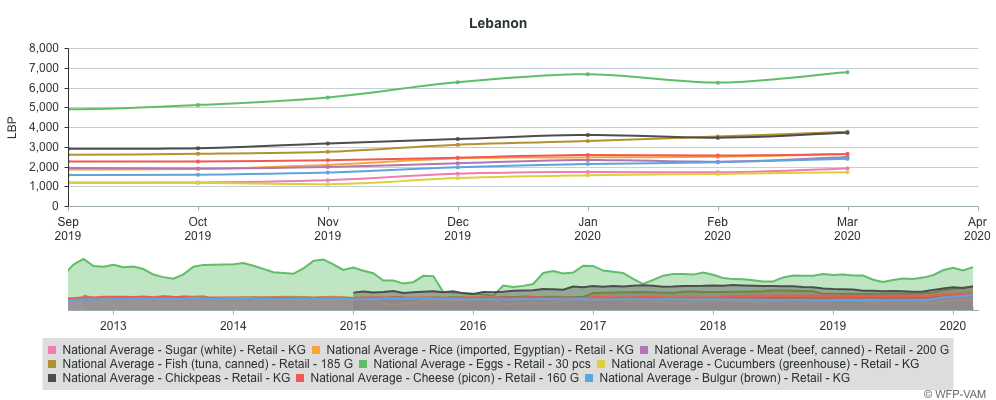These days when we go grocery shopping in Lebanon, we do see and feel that prices have increased drastically.
We’ve been searching for data on inflation these past months, and strangely enough, we struggled to find it.
Until we stumbled upon this: https://dataviz.vam.wfp.org/economic_explorer/prices
It’s a data visualisation by the United Nations World food Program of prices of a certain number of commodities.
So we checked and…
Bulghur prices ( in LBP) increased by 50.9 % between October 2019 and March 2020 (in 6 months then),
Egyptian rice: +40.5 %
Eggs: + 32.5 %
Picon: +16.6 %
Cucumbers: + 46 %
Chickpeas: + 30 %
White sugar: +59.1%
Canned meat : + 30,6 %
Canned tuna: +42.4 %

In short, food prices have tremendously increased , which:
–Endangers a lot of vulnerable communities who were already struggling to put food on the table. The Lebanese Government estimates that 75 % of the population are now in need of aid, including food aid. Among refugee communities, the need for food aid rises to 90%, according to the International Rescue Committee.
-Is due in part to the fact that we import the vast majority of our food. With the dollar shortage in the country and its price soaring on the black market, it became more expensive to import (when you import something, you have to pay in dollars, which is the international trade currency).
And even for locally grown items, such as cucumbers, well, their price increase in due to a variety of reasons: one of them is that a vast majority of the inputs they require to grow (such as fertilizers, pesticides, seeds, machinery, etc) are imported, hence got more expensive, which translates into the final price.
Another one is that agro food products in the Lebanese wholesale market are priced in USD, which influence their price in LBP.
And of course, some producers/distributors also intentionally raise the prices of local products in line with overall price trends in the country.
Sources: UNWFP, The Guardian, Kulluna Irada
